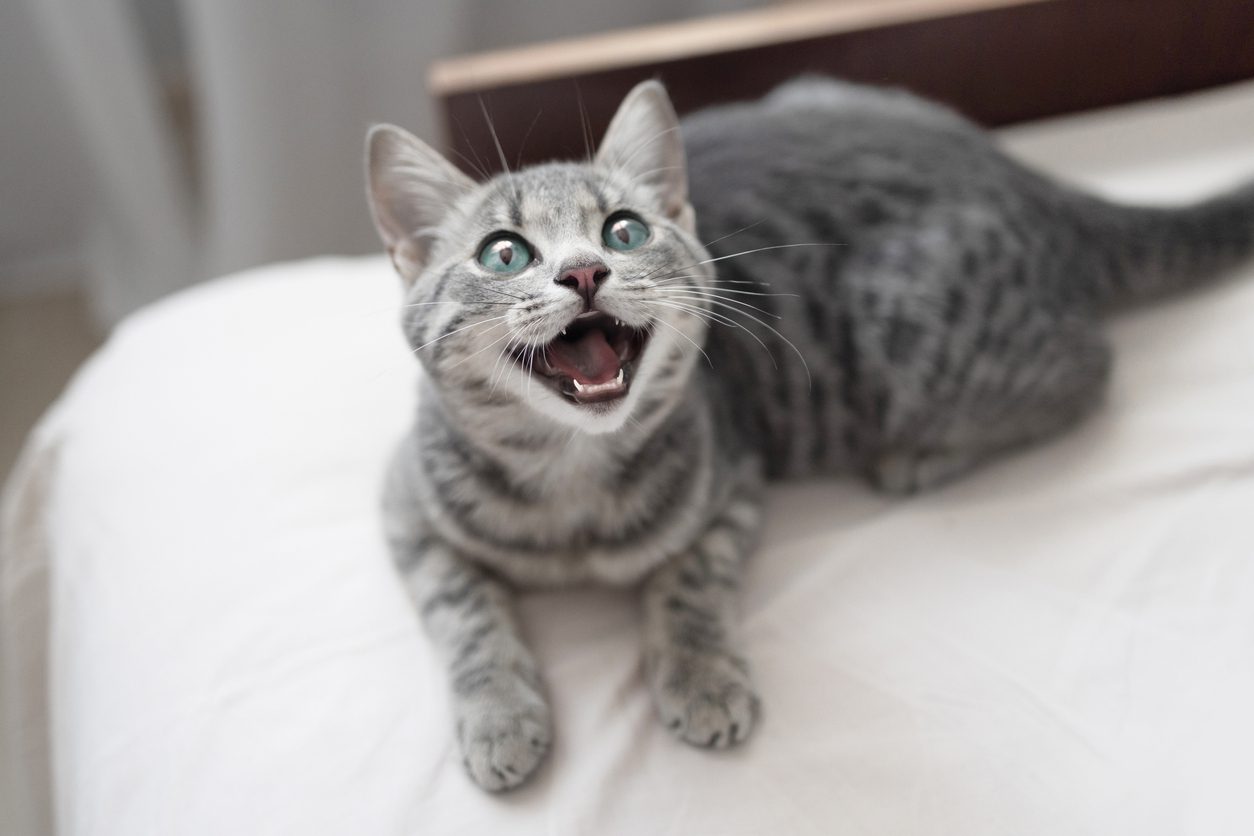When communicating with each other, cats employ a complex and deeply textured language that includes scent, body language and touch. So what’s up with the meowing? Science has taken a deep dive into the common meow and has revealed some surprising findings.
It All Starts with Mama
As newborns, kittens are nearly helpless, relying on their mother for nutrition, warmth and grooming. They communicate their needs as best they can, using small vocalizations to notify mom when they’re hungry or distressed. If allowed to mature in a feral cat colony, the kittens would naturally vocalize less as they matured into adulthood. But when a kitten is cared for by a human, it has only the “language” that helped it get care from its mom—so it uses the same “baby talk” to communicate with us.
What Happens Next Depends On Us
When a kitten meows, it’s usually because it needs or wants something from us. That could be food or affection, playtime or a favorite toy, or help getting out of a jam. When we respond to meet that need or want, we reinforce the kitten’s use of vocalizations. A meow, the kitten quickly learns, can get a food bowl refilled or a favorite toy freed from beneath the couch, and this helps reinforce the bond between us and our cats.
The History of Humans and Cats
The partnership between humans and cats goes back about 10,000 years when humans began to plant crops and store grains. Mice, rats and other vermin came to feed on the grain and cats arrived to feed on the mice. Domestication, it seems, was born from this mutually beneficial relationship. And so cats began living at the fringes of, and later within, human communities. The relationship, for the most part, has been a good one. Cats are still valued as mousers today. With cats as pets in so many families, it’s easy to see how bridging the communication gap between species has become a work in progress.
Deciphering the Meow
Scientists have spent significant time researching the how and why of the humble meow, and their studies revealed some surprising subtleties. Professor Bjarne Braastad of the Norwegian University of Life Sciences noted that the feline vocabulary uses adaptations of the kitten sounds used when communicating with mom. For Braastad, we as cat owners fill the role of mom, and the conversation continues.
Braastad went further and examined the subtleties of the meow.
- When the “mrr” sound at the start of the meow is emphasized, it’s a sign of affection, a greeting or an invitation to connect.
- When the “ee” sound in the meow is stressed, your pet may be stressed too. This is usually a sign of discomfort, such as hunger or cold.
- When the “aah” preceding the “ow” is emphasized, it’s likely a sign that your cat needs or wants something ASAP, such as food or outdoor time. The longer the sound, the more urgent the request.
The Melody of Communication
When our cats vocalize, there’s a cadence, or almost a melody to it. And often, we respond with baby talk, or soft, affectionate cooing that reinforces our pet’s desire to connect.
Learning to understand our cat’s signals and vocalizations can alert us when there’s a potential health problem, and can help us become better caretakers of our beloved felines.
